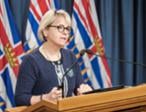Aboriginal Affairs and Northern Development Canada says despite criticisms of the proposed First Nations education legislation, if passed the act will provide a "system" desperately needed to improve on-reserve education in this country.
In response to questions The Tyee asked on Friday, the department (AANDC) responded via email that the federal bill addresses criticisms of the current on-reserve school system.
"Study after study has said that we must put in place a system of education which gives First Nation students the same legislative base, rights and opportunities as all other students in this country," read the email, citing the auditor general’s June 2011 status report and the final report from the National Panel on Elementary and Secondary Education on Reserve as two of those studies.
AANDC says the first draft expands on the legislation Blueprint released in July, specifically to the sections recognizing First Nation control over First Nation education and aboriginal treaty rights, as well as committing to a new and "stable" funding formula and making clear how nations who have signed tripartite education agreements, like the one in B.C., will transfer to the proposed federal legislation.
Organizations such as the First Nations Education Steering Committee (FNESC) argue funding is the biggest priority for improving education on reserves, yet the draft doesn’t mention a funding increase. Last week FNESC president Tyrone McNeil told The Tyee AANDC initially said any legislation would deal solely with funding. But AANDC remembers it differently.
"This is not the case. There have been several meetings with FNESC that went into significant detail about many aspects of the proposed approach. The intention of the proposed legislation initiative is to expand and build on many of the education standards, policies, supports, and services established under the [B.C.] Tripartite Education Framework Agreement," read the email.
"Provisions on funding in section 31 of the draft legislative proposal are one part of the proposed education system. This is consistent with the messages that AANDC officials have expressed to FNESC and FNSA in meetings and correspondence."
Asked if funding would increase for on-reserve schools -- which receive about 30 per cent less funding per student than off-reserve schools -- the department responded: "Providing First Nations students with access to a good education requires more than money -- it requires that a solid, transparent and accountable education system is in place."
B.C. is one of several provinces who already have on-reserve education agreements with their province and the federal government. Asked why the department would sign these agreements if they planned to replace them with the proposed legislation, the department quoted from their website's “Myths and Facts” section.
"Sharing resources and practices, especially in a context where First Nation students move between on-reserve and provincial systems over the course of their educations, strengthens results and improves outcomes for students. The Government of Canada has been prioritizing the promotion of collaboration among First Nations, provinces, and the Government of Canada and other stakeholders in order to improve the success of First Nation elementary and secondary students in First Nation and provincial schools. The result will be concrete benefits for the students, teachers and administrators involved. These partnership arrangements open the way to better coordination between First Nation and provincial schools, and are a part of the Government of Canada's reform efforts."
FNESC and the First Nations Schools Association are holding a meeting for B.C. First Nations regarding the draft legislation in Vancouver on Nov/ 19.
Katie Hyslop reports on education and youth issues for The Tyee Solutions Society. Follow her on Twitter.










What have we missed? What do you think? We want to know. Comment below. Keep in mind:
Do:
Do not: